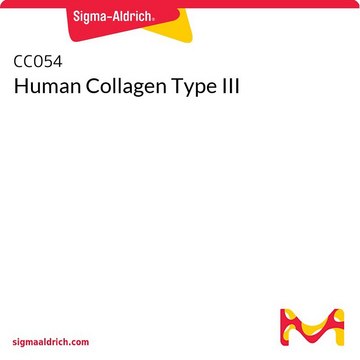Key Documents
C7673
Monoclonal Anti-CD14 antibody produced in mouse
clone UCHM-1, purified immunoglobulin, buffered aqueous solution
Synonim(y):
Monoclonal Anti-CD14
About This Item
Polecane produkty
pochodzenie biologiczne
mouse
Poziom jakości
białko sprzężone
unconjugated
forma przeciwciała
purified immunoglobulin
rodzaj przeciwciała
primary antibodies
klon
UCHM-1, monoclonal
Postać
buffered aqueous solution
masa cząsteczkowa
antigen 55 kDa
reaktywność gatunkowa
human
metody
flow cytometry: 5 μL using 1 × 106 cells
izotyp
IgG2a
numer dostępu UniProt
Warunki transportu
wet ice
temp. przechowywania
2-8°C
docelowa modyfikacja potranslacyjna
unmodified
informacje o genach
human ... CD14(929)
Szukasz podobnych produktów? Odwiedź Przewodnik dotyczący porównywania produktów
Powiązane kategorie
Specyficzność
3rd Workshop: code no. 203
4th Workshop: code no. M24
Immunogen
Zastosowanie
- Flow cytometry at a dilution of 5μL using 1 × 106 cells
- Immunofluorescence.
- Immunoblotting.
Działania biochem./fizjol.
Opis wartości docelowych
Postać fizyczna
Oświadczenie o zrzeczeniu się odpowiedzialności
Nie możesz znaleźć właściwego produktu?
Wypróbuj nasz Narzędzie selektora produktów.
Kod klasy składowania
10 - Combustible liquids
Klasa zagrożenia wodnego (WGK)
nwg
Temperatura zapłonu (°F)
Not applicable
Temperatura zapłonu (°C)
Not applicable
Certyfikaty analizy (CoA)
Poszukaj Certyfikaty analizy (CoA), wpisując numer partii/serii produktów. Numery serii i partii można znaleźć na etykiecie produktu po słowach „seria” lub „partia”.
Masz już ten produkt?
Dokumenty związane z niedawno zakupionymi produktami zostały zamieszczone w Bibliotece dokumentów.
Nasz zespół naukowców ma doświadczenie we wszystkich obszarach badań, w tym w naukach przyrodniczych, materiałoznawstwie, syntezie chemicznej, chromatografii, analityce i wielu innych dziedzinach.
Skontaktuj się z zespołem ds. pomocy technicznej







